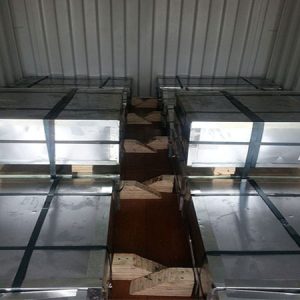Tinplate
Tinplate is a thin steel sheet that has been coated with a layer of tin, creating a corrosion resistant material that is often used in the food industry for items like cans.
A tinplate sheet is a thin, flat piece of steel that has been coated with a layer of tin. This is done by either dipping the steel in a bath of molten tin or by electroplating.
Tinplate coil is a long strip of thin steel that is coated with a layer of tin and wound into a coil for storage and transport. This tin coating provides the coil with a shiny, rust-resistant finish, making it ideal for use in a variety of manufacturing processes, particularly in the food and beverage industries where it is commonly used to make cans and other types of packaging.
Tin Free Steel (TFS) is a type of steel sheet that has been coated with a layer of chromium or chromium oxide instead of tin. This gives the TFS a similar shiny, rust-resistant finish as tinplate, but without using tin. It is often used as a cheaper alternative to tinplate for packaging, especially for making can tops and bottoms in the food industry.
Electrolytic Tinplate (ETP) sheet is a type of tinplate that is produced by electroplating a thin layer of tin onto a steel sheet. The process involves passing an electric current through a solution, causing the tin ions to bond to the steel surface. Electrolytic Tinplate sheets are commonly used in the packaging industry, particularly in the manufacturing of food and beverage cans due to its resistance to corrosion and its food-safe properties.
Showing the single result

